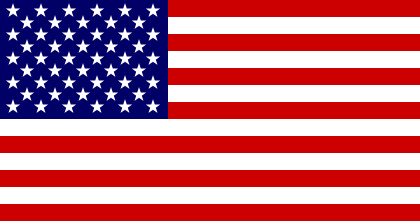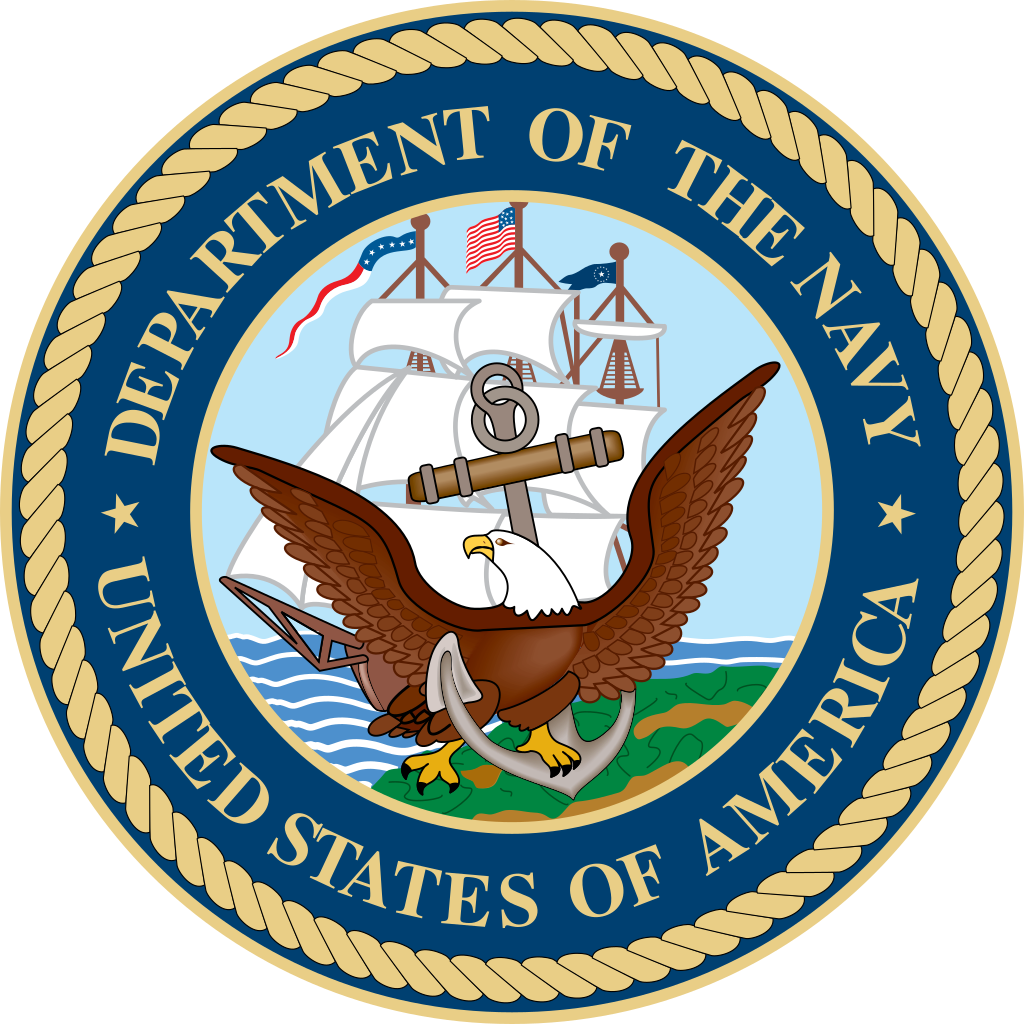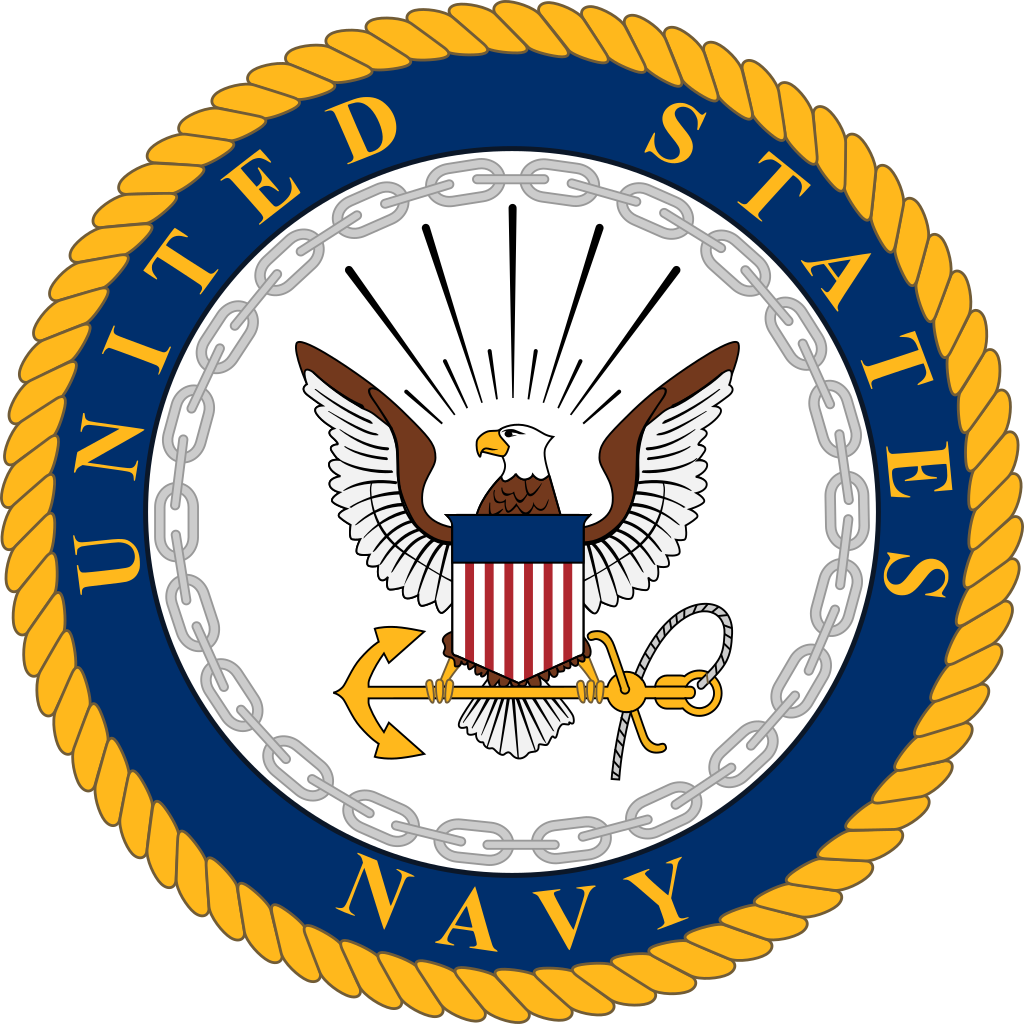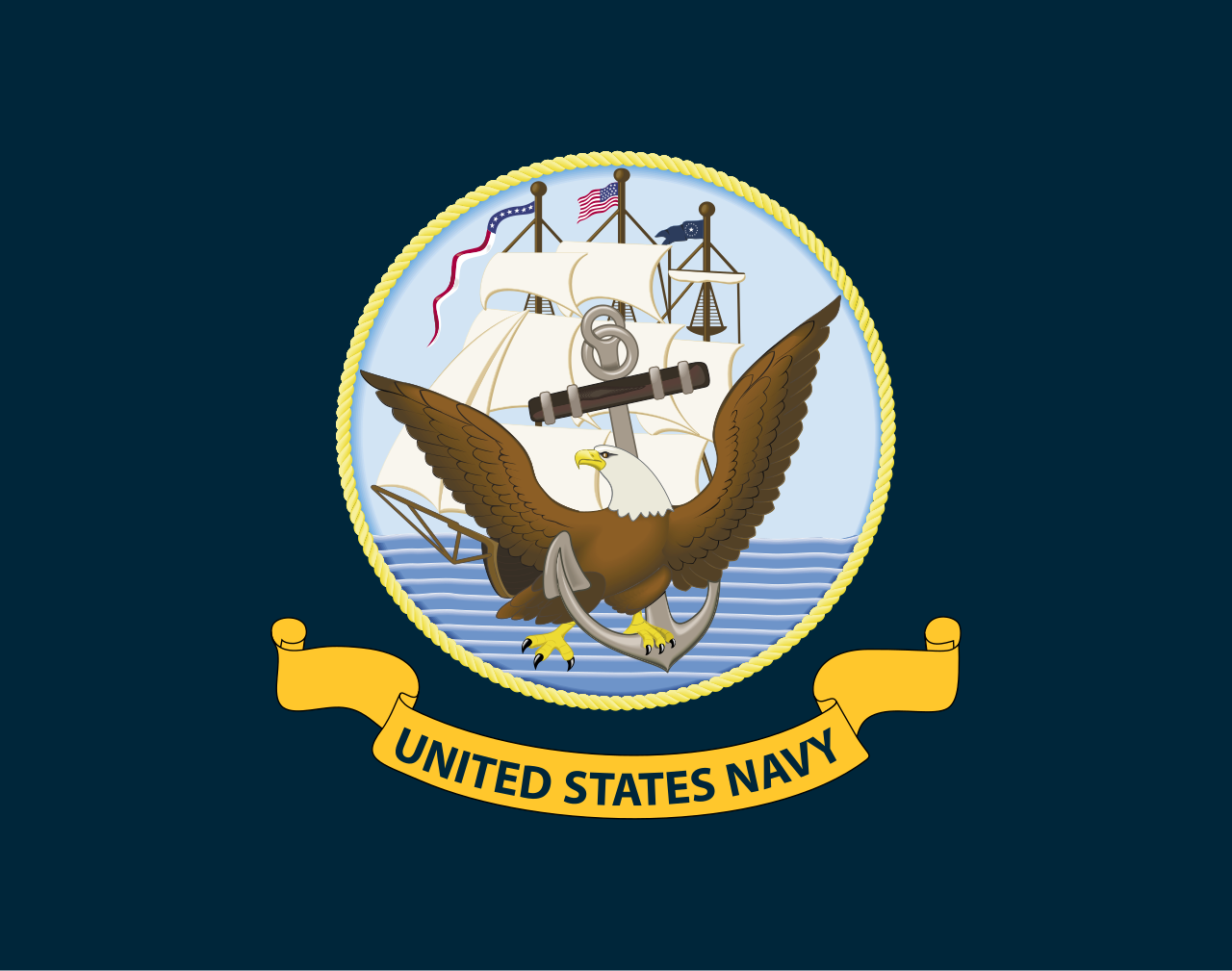- Jul 12, 2018
- 9,336

|
OPERATION OMEGA |
SECRET |

| 
NAVY DEPLOYMENT | 
|
|
CARRIER STRIKE GROUP TWO
Rear Admiral Edmund J. Nelson
Rear Admiral Edmund J. Nelson
| Ship Class | Vessel | Compliment | Home Port |
| Enterprise-class Aircraft Carrier | USS Enterprise | Total: 4800 / Compliment: 3000 / Pilots: 250 / Air Wing: 1550 | Naval Support Activity Hampton Roads, Virginia |
| Ticonderoga-class Guided Missile Cruiser | USS Ticonderoga | 330 | Naval Support Activity Hampton Roads, Virginia |
| Ticonderoga-class Guided Missile Cruiser | USS Yorktown | 330 | Naval Support Activity Hampton Roads, Virginia |
| Ticonderoga-class Guided Missile Cruiser | USS Vincennes | 330 | Naval Support Activity Hampton Roads, Virginia |
| Arleigh Burke-class Guided Missile Destroyer | USS Jeff Sessions | 323 | Naval Support Activity Hampton Roads, Virginia |
| Arleigh Burke-class Guided Missile Destroyer | USS Richard Shelby | 323 | Naval Support Activity Hampton Roads, Virginia |
| Arleigh Burke-class Guided Missile Destroyer | USS Ted Stevens | 323 | Naval Support Activity Hampton Roads, Virginia |
| Arleigh Burke-class Guided Missile Destroyer | USS Frank Murkowski | 323 | Naval Support Activity Hampton Roads, Virginia |
| Arleigh Burke-class Guided Missile Destroyer | USS Jon Kyl | 323 | Naval Support Activity Hampton Roads, Virginia |
| Spruance-class Destroyer | USS Spruance | 334 | Naval Support Activity Hampton Roads, Virginia |
| Spruance-class Destroyer | USS Paul F. Foster | 334 | Naval Support Activity Hampton Roads, Virginia |
| Spruance-class Destroyer | USS Kinkaid | 334 | Naval Support Activity Hampton Roads, Virginia |
| Supply-class Support Ship | USNS Supply | 600 | Naval Support Activity Hampton Roads, Virginia |
| Supply-class Support Ship | USNS Rainer | 600 | Naval Support Activity Hampton Roads, Virginia |
| Henry J. Kaiser-class Replenishment Oiler | USNS Henry J. Kaiser | 113 | Naval Support Activity Hampton Roads, Virginia |
| Henry J. Kaiser-class Replenishment Oiler | USNS Joshua Humphreys | 113 | Naval Support Activity Hampton Roads, Virginia |
CARRIER AIR WING ONE
Captain Patrick Smith
Captain Patrick Smith
| Squadron | Aircraft | Number of Aircraft | Personnel | Garrison |
| Fighter Attack Squadron 101 (VFA-101) | F/A-18F Super Hornet | 12 | 24 Pilots | Naval Air Station Oceana, Virginia |
| Fighter Attack Squadron 102 (VFA-102) | F/A-18F Super Hornet | 12 | 24 Pilots | Naval Air Station Oceana, Virginia |
| Fighter Attack Squadron 103 (VFA-103) | F/A-18F Super Hornet | 12 | 24 Pilots | Naval Air Station Oceana, Virginia |
| Fighter Attack Squadron 104 (VFA-104) | F/A-18F Super Hornet | 12 | 24 Pilots | Naval Air Station Oceana, Virginia |
| Marine Fighter Attack Squadron 201 | F/A-18F Super Hornet | 12 | 24 Pilots | Naval Air Station Oceana, Virginia |
| Electronic Attack Squadron 301 (VAQ-301) | EA-18G Growler | 12 | 24 Pilots | Naval Air Station Oceana, Virginia |
| Carrier Airborne Early Warning Squadron 401 (VAW-401) | E-2C Hawkeye | 4 | 20 Pilots | Naval Station Norfolk Chambers Field, Virginia |
| Fleet Logistics Support Squadron 501 (VRC-501) | C-2 Greyhound | 2 | 4 Pilots | 4 Crew | Naval Station Norfolk Chambers Field, Virginia |
CARRIER STRIKE GROUP FOUR
Rear Admiral Vance Thibodeaux
Rear Admiral Vance Thibodeaux
| Ship Class | Vessel | Compliment | Home Port |
| Nimitz-class Aircraft Carrier | William J. Clinton | Total: 6012 / Compliment: 3532 / Pilots: 250 / Air Wing: 2230 | Naval Support Activity Hampton Roads, Virginia |
| Ticonderoga-class Guided Missile Cruiser | USS Bunker Hill | 330 | Naval Support Activity Hampton Roads, Virginia |
| Ticonderoga-class Guided Missile Cruiser | USS Thomas S. Gates | 330 | Naval Support Activity Hampton Roads, Virginia |
| Ticonderoga-class Guided Missile Cruiser | USS Leyte Gulf | 330 | Naval Support Activity Hampton Roads, Virginia |
| Arleigh Burke-class Guided Missile Destroyer | USS Joseph R. Biden | 323 | Naval Support Activity Hampton Roads, Virginia |
| Arleigh Burke-class Guided Missile Destroyer | USS Connie Mack III | 323 | Naval Support Activity Hampton Roads, Virginia |
| Arleigh Burke-class Guided Missile Destroyer | USS Bob Graham | 323 | Naval Support Activity Hampton Roads, Virginia |
| Arleigh Burke-class Guided Missile Destroyer | USS Max Cleland | 323 | Naval Support Activity Hampton Roads, Virginia |
| Arleigh Burke-class Guided Missile Destroyer | USS Paul Coverdell | 323 | Naval Support Activity Hampton Roads, Virginia |
| Spruance-class Destroyer | USS Peterson | 334 | Naval Support Activity Hampton Roads, Virginia |
| Spruance-class Destroyer | USS Caron | 334 | Naval Support Activity Hampton Roads, Virginia |
| Spruance-class Destroyer | USS David R. Ray | 334 | Naval Support Activity Hampton Roads, Virginia |
| Supply-class Support Ship | USNS Stratus | 600 | Naval Support Activity Hampton Roads, Virginia |
| Supply-class Support Ship | USNS Cirrus | 600 | Naval Support Activity Hampton Roads, Virginia |
| Henry J. Kaiser-class Replenishment Oiler | USNS John Isherwood | 113 | Naval Support Activity Hampton Roads, Virginia |
| Henry J. Kaiser-class Replenishment Oiler | USNS Henry Eckford | 113 | Naval Support Activity Hampton Roads, Virginia |
CARRIER AIR WING TWO
Captain Michael Bondar
Captain Michael Bondar
| Squadron | Aircraft | Number of Aircraft | Personnel | Garrison |
| Fighter Attack Squadron 105 (VFA-105) | F/A-18F Super Hornet | 12 | 24 Pilots | Naval Air Station Oceana, Virginia |
| Fighter Attack Squadron 106 (VFA-106) | F/A-18F Super Hornet | 12 | 24 Pilots | Naval Air Station Oceana, Virginia |
| Fighter Attack Squadron 107 (VFA-107) | F/A-18F Super Hornet | 12 | 24 Pilots | Naval Air Station Oceana, Virginia |
| Fighter Attack Squadron 108 (VFA-108) | F/A-18F Super Hornet | 12 | 24 Pilots | Naval Air Station Oceana, Virginia |
| Marine Fighter Attack Squadron 202 | F/A-18F Super Hornet | 12 | 24 Pilots | Marine Corps Air Station Cherry Point, NC |
| Electronic Attack Squadron 302 (VAQ-302) | EA-18G Growler | 12 | 24 Pilots | Naval Air Station Oceana, Virginia |
| Carrier Airborne Early Warning Squadron 402 (VAW-402) | E-2D Hawkeye | 4 | 20 Pilots | Naval Station Norfolk Chambers Field, Virginia |
| Fleet Logistics Support Squadron 502 (VRC-502) | C-2 Greyhound | 2 | 4 Pilots | 4 Crew | Naval Station Norfolk Chambers Field, Virginia |
DESTROYER SQUADRON TWO
Captain Paul Gibson
Captain Paul Gibson
| Ship Class | Vessel | Compliment | Home Port |
| Arleigh Burke-class Guided Missile Destroyer | USS Arleigh Burke | 323 | Naval Station Newport, Rhode Island |
| Arleigh Burke-class Guided Missile Destroyer | USS Barry | 323 | Naval Station Newport, Rhode Island |
| Arleigh Burke-class Guided Missile Destroyer | USS John Paul Jones | 323 | Naval Station Newport, Rhode Island |
| Arleigh Burke-class Guided Missile Destroyer | USS Daniel Inouye | 323 | Naval Station Newport, Rhode Island |
| Arleigh Burke-class Guided Missile Destroyer | USS Daniel Akaka | 323 | Naval Station Newport, Rhode Island |
SUBMARINE SQUADRON 2
Captain Richard O'Reilly
Captain Richard O'Reilly
| Ship Class | Vessel | Compliment | Home Port |
| Los Angeles-class Submarine | USS San Juan | 110 | Naval Submarine Base New London, Connecticut |
| Los Angeles-class Submarine | USS Pasadena | 110 | Naval Submarine Base New London, Connecticut |
| Los Angeles-class Submarine | USS Albany | 110 | Naval Submarine Base New London, Connecticut |
| Los Angeles-class Submarine | USS Topeka | 110 | Naval Submarine Base New London, Connecticut |
SUBMARINE SQUADRON 4
Captain Ragnar Hansen
Captain Ragnar Hansen
| Ship Class | Vessel | Compliment | Home Port |
| Los Angeles-class Submarine | USS Miami | 110 | Naval Submarine Base Kings Bay, Georgia |
| Los Angeles-class Submarine | USS Scranton | 110 | Naval Submarine Base Kings Bay, Georgia |
| Los Angeles-class Submarine | USS Alexandria | 110 | Naval Submarine Base Kings Bay, Georgia |
| Los Angeles-class Submarine | USS Asheville | 110 | Naval Submarine Base Kings Bay, Georgia |
DETAILS
Nimitz-class - Fully Fueled; Aviation reserves fully fueled; Non-perishable and perishable food/water for 3 month journey; Standard armaments including: x3 NATO Sea Sparrow Launchers (x8 RIM-7 Sea Sparrow loaded in each); x4 Phalanx CIWS; x2 RAM launchers (x21 missiles); Standard countermeasures/decoys; Onboard: x500 M4A1 Carbine and associated ammo and x500 M1911 and associated ammo in barracks;
Aircraft: x60 Boeing F/A-18E/F Super Hornet and all of their necessary armaments and equipment; x12 EA-18G Growler; x8 MH-60S; x5 Northrop Grumman E-2D Hawkeye; x2 C-25 Greyhound.
Enterprise-class - Fully Fueled; Aviation reserves fully fueled; Non-perishable food/water for 3 month journey; Standard armaments including: x3 NATO Sea Sparrow Launchers (x8 RIM-7 Sea Sparrow loaded in each); x3 Phalanx CIWS; x2 RAM launchers (x21 missiles); Standard countermeasures/decoys; Onboard: x1000 M4A1 Carbine and associated ammo and x1000 M1911 and associated ammo in barracks;
Aircraft: x60 Boeing F/A-18E/F Super Hornet and all of their necessary armaments and equipment; x12 EA-16G-Growler; x8 MH-60S; x5 Northrop Grumman E-2C Hawkeye; x2 C-25 Greyhound.
Ticonderoga-class - Fully Fueled; Non-perishable and perishable food/water for 3 month journey; x8 RGM-84 Harpoon missiles; x2 5 in 62 caliber Mark 45 Mod 4 lightweight gun; x2 25 mm (0.98 in) Mk 38 gun; x4 .50 in (12.7 mm) cal. machine gun; x2 Phalanx CIWS Block 1B; x2 Mk 32 12.75 in (324 mm) triple torpedo tubes (standard reserve of Mk 54 torpedoes); Onboard: x30 M4A1 Carbine and associated ammo and x30 M1911 and associated ammo in barracks;
x2 61 cell Mk 41 vertical launch systems containing: x20 RUM-139C (Mrk 54 Torpedo); x200 (Quad packed) RIM-162A ESSM; x20 RIM-161B (SM-3 block IA); x32 RGM/UGM-109B Tomahawk Anti-Ship Missile;
Countermeasures/decoys: Mark 36 SRBOC; AN/SLQ-25 Nixie;
Aircraft: x2 Sikorsky MH-60S;
Boats: x1 RHIB.
Arleigh Burke-class (Flight IIA) [Within CSG-Two & CSG-Four] - Fully Fueled; Non-perishable and perishable food/water for 3 month journey; x1 5-inch (127 mm)/62 Mk. 45 Mod 4 (lightweight gun); x2 20 mm Phalanx CIWS; x2 25 mm M242 Bushmaster chain gun; x2 Mk 141 Harpoon Anti-Ship Missile Launcher (x8 Harpoon missiles each); x2 Mark 32 triple torpedo tubes: x1 per tube + full standard storage of Mark 54 torpedoes on ship; Onboard: x150 M4A1 Carbine and associated ammo and x150 M1911 and associated ammo in barracks.
96-cell Mk 41 VLS: x4 RUM-139C (Mrk 54 Torpedo); x100 (Quad packed) RIM-162A ESSM; x10 RIM-161B (SM-3 block IA); x7 RGM/UGM-109E Tomahawk Land Attack Missile; x50 RGM/UGM-109B Tomahawk Anti-Ship Missile;
Countermeasures/decoys: AN/SLQ-32(V)2 Electronic Warfare System; AN/SLQ-25 Nixie Torpedo Countermeasures; MK 36 MOD 12 Decoy Launching System; MK 53 Nulka Decoy Launching System; AN/SLQ-39 CHAFF Buoys;
Aircraft: x2 Sikorsky MH-60S;
Boats: x1 RHIB.
Arleigh Burke-class (Flight IIA) [Within COMDESRON-TWO] - Fully Fueled; Non-perishable and perishable food/water for 3 month journey; x1 5-inch (127 mm)/62 Mk. 45 Mod 4 (lightweight gun); x2 20 mm Phalanx CIWS; x2 25 mm M242 Bushmaster chain gun; x2 Mk 141 Harpoon Anti-Ship Missile Launcher (x8 Harpoon missiles each); x2 Mark 32 triple torpedo tubes: x1 per tube + full standard storage of Mark 54 torpedoes on ship; Onboard: x150 M4A1 Carbine and associated ammo and x150 M1911 and associated ammo in barracks.
96-cell Mk 41 VLS: x4 RUM-139C (Mrk 54 Torpedo); x100 (Quad packed) RIM-162A ESSM; x35 RIM-161B (SM-3 block IA); x5 RGM/UGM-109E Tomahawk Land Attack Missile; x27 RGM/UGM-109B Tomahawk Anti-Ship Missile;
Countermeasures/decoys: AN/SLQ-32(V)2 Electronic Warfare System; AN/SLQ-25 Nixie Torpedo Countermeasures; MK 36 MOD 12 Decoy Launching System; MK 53 Nulka Decoy Launching System; AN/SLQ-39 CHAFF Buoys;
Aircraft: x2 Sikorsky MH-60S;
Boats: x1 RHIB.
Arleigh Burke-class (Flight II) [Within COMDESRON-TWO] - Fully Fueled; Non-perishable and perishable food/water for 3 month journey; x1 5-inch (127 mm)/62 Mk. 45 Mod 4 (lightweight gun); x2 20 mm Phalanx CIWS; x2 25 mm M242 Bushmaster chain gun; x2 Mk 141 Harpoon Anti-Ship Missile Launcher (x8 Harpoon missiles each); x2 Mark 32 triple torpedo tubes: x1 per tube + full standard storage of Mark 54 torpedoes on ship; Onboard: x150 M4A1 Carbine and associated ammo and x150 M1911 and associated ammo in barracks.
90-cell Mk 41 VLS: x4 RUM-139C (Mrk 54 Torpedo); x100 (Quad packed) RIM-162A ESSM; x35 RIM-161B (SM-3 block IA); x5 RGM/UGM-109E Tomahawk Land Attack Missile; x21 RGM/UGM-109B Tomahawk Anti-Ship Missile;
Countermeasures/decoys: AN/SLQ-32(V)2 Electronic Warfare System; AN/SLQ-25 Nixie Torpedo Countermeasures; MK 36 MOD 12 Decoy Launching System; MK 53 Nulka Decoy Launching System; AN/SLQ-39 CHAFF Buoys;
Aircraft: x2 Sikorsky MH-60S;
Boats: x1 RHIB.
Spruance-class - Fully Fueled; Non-perishable food/water for 3 month journey; x2 5 in 54 caliber Mark 45 dual purpose guns; x2 20 mm Phalanx CIWS Mark 15 guns; x1 8 cell NATO Sea Sparrow Mark 29 missile launcher; x2 quadruple Harpoon missile canisters (x8 Harpoon missiles each); x2 Mark 32 triple 12.75 in torpedo tubes (standard reserve of Mk 46 torpedoes); x1 21 cell RIM-116 Rolling Airframe Missile; Onboard: x30 M4A1 Carbine and associated ammo and x30 M1911 and associated ammo in barracks;
x1 61 cell Mk 41 VLS: x100 (Quad packed) RIM-162A ESSM; x36 RGM/UGM-109B Tomahawk Anti-Ship Missile;
Aircraft: x2 Sikorsky MH-60S;
Boats: x1 RHIB.
Supply-class - Fully Fueled; Fully-stocked with non-perishable and perishable food/water for 6 month journey of the entire fleet (on top of the resources the respective ships already have); complete storage of usable fuel for aforementioned vessels; complete storage of aviation fuel for aforementioned aircraft; x2 Sikorsky MH-60S; Onboard: x100 M4A1 Carbine and associated ammo and x100 M1911 and associated ammo in barracks;
Boats: x1 RHIB
Henry J. Kaiser-class Replenishment Oiler - Fully Fueled; Fully-stocked with non-perishable and perishable food/water for 6 month journey; complete storage of usable fuel for all conventionally-powered vessels for 6 month journey; complete storage of aviation fuel for all aircraft in the fleet for 6 month deployment; Onboard: x60 M4A1 Carbine and associated ammo and x60 M1911 and associated ammo in barracks;
Countermeasures: x2 Phalanx CIWS
Boats: x1 RHIB.
Los Angeles-class - Fully Fueled; Non-perishable food/water for 3 month journey; x12 VLS tubes + x12 RGM/UGM-109E Tomahawk Land Attack Missile, x4 533 mm torpedo tubes + 13 Mk-48 torpedoes; Onboard: x80 M4A1 Carbine and associated ammo and x80 M1911 and associated ammo in barracks.
Aircraft: x60 Boeing F/A-18E/F Super Hornet and all of their necessary armaments and equipment; x12 EA-18G Growler; x8 MH-60S; x5 Northrop Grumman E-2D Hawkeye; x2 C-25 Greyhound.
Enterprise-class - Fully Fueled; Aviation reserves fully fueled; Non-perishable food/water for 3 month journey; Standard armaments including: x3 NATO Sea Sparrow Launchers (x8 RIM-7 Sea Sparrow loaded in each); x3 Phalanx CIWS; x2 RAM launchers (x21 missiles); Standard countermeasures/decoys; Onboard: x1000 M4A1 Carbine and associated ammo and x1000 M1911 and associated ammo in barracks;
Aircraft: x60 Boeing F/A-18E/F Super Hornet and all of their necessary armaments and equipment; x12 EA-16G-Growler; x8 MH-60S; x5 Northrop Grumman E-2C Hawkeye; x2 C-25 Greyhound.
Ticonderoga-class - Fully Fueled; Non-perishable and perishable food/water for 3 month journey; x8 RGM-84 Harpoon missiles; x2 5 in 62 caliber Mark 45 Mod 4 lightweight gun; x2 25 mm (0.98 in) Mk 38 gun; x4 .50 in (12.7 mm) cal. machine gun; x2 Phalanx CIWS Block 1B; x2 Mk 32 12.75 in (324 mm) triple torpedo tubes (standard reserve of Mk 54 torpedoes); Onboard: x30 M4A1 Carbine and associated ammo and x30 M1911 and associated ammo in barracks;
x2 61 cell Mk 41 vertical launch systems containing: x20 RUM-139C (Mrk 54 Torpedo); x200 (Quad packed) RIM-162A ESSM; x20 RIM-161B (SM-3 block IA); x32 RGM/UGM-109B Tomahawk Anti-Ship Missile;
Countermeasures/decoys: Mark 36 SRBOC; AN/SLQ-25 Nixie;
Aircraft: x2 Sikorsky MH-60S;
Boats: x1 RHIB.
Arleigh Burke-class (Flight IIA) [Within CSG-Two & CSG-Four] - Fully Fueled; Non-perishable and perishable food/water for 3 month journey; x1 5-inch (127 mm)/62 Mk. 45 Mod 4 (lightweight gun); x2 20 mm Phalanx CIWS; x2 25 mm M242 Bushmaster chain gun; x2 Mk 141 Harpoon Anti-Ship Missile Launcher (x8 Harpoon missiles each); x2 Mark 32 triple torpedo tubes: x1 per tube + full standard storage of Mark 54 torpedoes on ship; Onboard: x150 M4A1 Carbine and associated ammo and x150 M1911 and associated ammo in barracks.
96-cell Mk 41 VLS: x4 RUM-139C (Mrk 54 Torpedo); x100 (Quad packed) RIM-162A ESSM; x10 RIM-161B (SM-3 block IA); x7 RGM/UGM-109E Tomahawk Land Attack Missile; x50 RGM/UGM-109B Tomahawk Anti-Ship Missile;
Countermeasures/decoys: AN/SLQ-32(V)2 Electronic Warfare System; AN/SLQ-25 Nixie Torpedo Countermeasures; MK 36 MOD 12 Decoy Launching System; MK 53 Nulka Decoy Launching System; AN/SLQ-39 CHAFF Buoys;
Aircraft: x2 Sikorsky MH-60S;
Boats: x1 RHIB.
Arleigh Burke-class (Flight IIA) [Within COMDESRON-TWO] - Fully Fueled; Non-perishable and perishable food/water for 3 month journey; x1 5-inch (127 mm)/62 Mk. 45 Mod 4 (lightweight gun); x2 20 mm Phalanx CIWS; x2 25 mm M242 Bushmaster chain gun; x2 Mk 141 Harpoon Anti-Ship Missile Launcher (x8 Harpoon missiles each); x2 Mark 32 triple torpedo tubes: x1 per tube + full standard storage of Mark 54 torpedoes on ship; Onboard: x150 M4A1 Carbine and associated ammo and x150 M1911 and associated ammo in barracks.
96-cell Mk 41 VLS: x4 RUM-139C (Mrk 54 Torpedo); x100 (Quad packed) RIM-162A ESSM; x35 RIM-161B (SM-3 block IA); x5 RGM/UGM-109E Tomahawk Land Attack Missile; x27 RGM/UGM-109B Tomahawk Anti-Ship Missile;
Countermeasures/decoys: AN/SLQ-32(V)2 Electronic Warfare System; AN/SLQ-25 Nixie Torpedo Countermeasures; MK 36 MOD 12 Decoy Launching System; MK 53 Nulka Decoy Launching System; AN/SLQ-39 CHAFF Buoys;
Aircraft: x2 Sikorsky MH-60S;
Boats: x1 RHIB.
Arleigh Burke-class (Flight II) [Within COMDESRON-TWO] - Fully Fueled; Non-perishable and perishable food/water for 3 month journey; x1 5-inch (127 mm)/62 Mk. 45 Mod 4 (lightweight gun); x2 20 mm Phalanx CIWS; x2 25 mm M242 Bushmaster chain gun; x2 Mk 141 Harpoon Anti-Ship Missile Launcher (x8 Harpoon missiles each); x2 Mark 32 triple torpedo tubes: x1 per tube + full standard storage of Mark 54 torpedoes on ship; Onboard: x150 M4A1 Carbine and associated ammo and x150 M1911 and associated ammo in barracks.
90-cell Mk 41 VLS: x4 RUM-139C (Mrk 54 Torpedo); x100 (Quad packed) RIM-162A ESSM; x35 RIM-161B (SM-3 block IA); x5 RGM/UGM-109E Tomahawk Land Attack Missile; x21 RGM/UGM-109B Tomahawk Anti-Ship Missile;
Countermeasures/decoys: AN/SLQ-32(V)2 Electronic Warfare System; AN/SLQ-25 Nixie Torpedo Countermeasures; MK 36 MOD 12 Decoy Launching System; MK 53 Nulka Decoy Launching System; AN/SLQ-39 CHAFF Buoys;
Aircraft: x2 Sikorsky MH-60S;
Boats: x1 RHIB.
Spruance-class - Fully Fueled; Non-perishable food/water for 3 month journey; x2 5 in 54 caliber Mark 45 dual purpose guns; x2 20 mm Phalanx CIWS Mark 15 guns; x1 8 cell NATO Sea Sparrow Mark 29 missile launcher; x2 quadruple Harpoon missile canisters (x8 Harpoon missiles each); x2 Mark 32 triple 12.75 in torpedo tubes (standard reserve of Mk 46 torpedoes); x1 21 cell RIM-116 Rolling Airframe Missile; Onboard: x30 M4A1 Carbine and associated ammo and x30 M1911 and associated ammo in barracks;
x1 61 cell Mk 41 VLS: x100 (Quad packed) RIM-162A ESSM; x36 RGM/UGM-109B Tomahawk Anti-Ship Missile;
Aircraft: x2 Sikorsky MH-60S;
Boats: x1 RHIB.
Supply-class - Fully Fueled; Fully-stocked with non-perishable and perishable food/water for 6 month journey of the entire fleet (on top of the resources the respective ships already have); complete storage of usable fuel for aforementioned vessels; complete storage of aviation fuel for aforementioned aircraft; x2 Sikorsky MH-60S; Onboard: x100 M4A1 Carbine and associated ammo and x100 M1911 and associated ammo in barracks;
Boats: x1 RHIB
Henry J. Kaiser-class Replenishment Oiler - Fully Fueled; Fully-stocked with non-perishable and perishable food/water for 6 month journey; complete storage of usable fuel for all conventionally-powered vessels for 6 month journey; complete storage of aviation fuel for all aircraft in the fleet for 6 month deployment; Onboard: x60 M4A1 Carbine and associated ammo and x60 M1911 and associated ammo in barracks;
Countermeasures: x2 Phalanx CIWS
Boats: x1 RHIB.
Los Angeles-class - Fully Fueled; Non-perishable food/water for 3 month journey; x12 VLS tubes + x12 RGM/UGM-109E Tomahawk Land Attack Missile, x4 533 mm torpedo tubes + 13 Mk-48 torpedoes; Onboard: x80 M4A1 Carbine and associated ammo and x80 M1911 and associated ammo in barracks.
|

| 
DEPLOYMENT ORDERS | 
|
|
CONTEXT
The United States and the Kingdom of Spain have suffered a collapse in diplomatic relations over the past few weeks. The Spanish Foreign Minister demanded to the Secretary of State that the United States turn over Puerto Rico to Spain multiple times. The President summoned the Spanish ambassador to the White House to gain clarification, only to receive similar treatment from the Spanish Ambassador. In response, the President declare the ambassador Persona Non Grata and gave the Spanish government an ultimatum to recognize Puerto Rico as part of the United States, otherwise there would be serious repercussions. Under pressure from his own government, the Spanish Prime Minister resigned for his radical policies and now a new Prime Minister must be chosen for Spain. In the meantime, the government is in transition. The acting head of government of Spain recognized that Puerto Rico is part of the United States and publicly made it clear that Spain would not continue to try to claim Puerto Rico.
In the meantime, the Thai government announced that it would be deploying a surface fleet of armed ships into the Atlantic in some kind of attempt to force a peace between the United States and Spain. The White House and the Pentagon both strongly agree that this is a provocative, if not threatening move, directly against the United States which cannot go unquestioned. After meeting with the Secretary of Defense, the Secretary of the Navy, and the Commander of the Atlantic Fleet for six hours at the White House, the President ordered a mass mobilization of the United States Atlantic Fleet as a response to the Thai deployment. The mission of this deployment will be to prevent any meaningful progress by Thailand's Navy to project power in the Atlantic and, if necessary, use force to expel (or destroy) the fleet from the Atlantic if it poses a legitimate threat to the United States, her allies, or Europe.
Over 30,000 Navy sailors, most of whom were at port, were informed that their leave and liberty had been suspended effective immediately and that they were to report to port for mobilization and deployment. Most of these sailors would be deployed, while the rest would be held in deserve. Weapons would be prepared just as personnel would be, aircraft would be loaded onto vessels, and the Atlantic Fleet prepared for its biggest deployment since the war with Turkey.
In the meantime, the Thai government announced that it would be deploying a surface fleet of armed ships into the Atlantic in some kind of attempt to force a peace between the United States and Spain. The White House and the Pentagon both strongly agree that this is a provocative, if not threatening move, directly against the United States which cannot go unquestioned. After meeting with the Secretary of Defense, the Secretary of the Navy, and the Commander of the Atlantic Fleet for six hours at the White House, the President ordered a mass mobilization of the United States Atlantic Fleet as a response to the Thai deployment. The mission of this deployment will be to prevent any meaningful progress by Thailand's Navy to project power in the Atlantic and, if necessary, use force to expel (or destroy) the fleet from the Atlantic if it poses a legitimate threat to the United States, her allies, or Europe.
Over 30,000 Navy sailors, most of whom were at port, were informed that their leave and liberty had been suspended effective immediately and that they were to report to port for mobilization and deployment. Most of these sailors would be deployed, while the rest would be held in deserve. Weapons would be prepared just as personnel would be, aircraft would be loaded onto vessels, and the Atlantic Fleet prepared for its biggest deployment since the war with Turkey.
|
Last edited:


